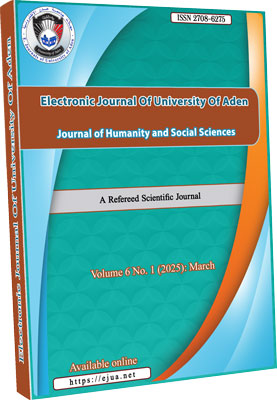SPATIAL ANALYSIS OF RELIGIOUS FUNCTION IN SHIRA DISTRICT (OLD CITY OF ADEN)
DOI:
https://doi.org/10.47372/ejua-hs.2025.1.430Keywords:
Religious function, Geographic controls, Shira district, Spatial distributionAbstract
This study aimed to provide a realistic picture of the religious function in the old city of Aden, and to identify and analyze the controls that shape this picture. To achieve this, the research procedures relied on collecting primary data related to the phenomenon from its sources in government agencies (Planning and Statistics Office - Awqaf Office) in the district and governorate. Additionally, interviews were conducted with specialists, followed by field observations to examine and document the phenomenon. The descriptive approach, with its scientific methodology, was used to interpret the data and controls related to the religious function, both quantitatively and qualitatively, in order to reach objective results that reflect the production of new maps for the distribution of religious uses in Aden city. The land use map is a distinctive feature in geographic research, especially in urban geography (Hall, 1992, p. 18). The study showed that the religious function is concentrated in the 2nd of March and Al-Salafi neighborhoods, for more than 50%. which are located in the central area between Wadi Al-Tawila and Wadi Al-Aydarus, and this confirms the strong relationship between water courses and the planning aspect of the central area, and the concentration of the religious function in particular, as well as its impact on the concentration of urban development in general.
Downloads
Downloads
Published
How to Cite
Issue
Section
License

This work is licensed under a Creative Commons Attribution-NonCommercial 4.0 International License.








